“Magic is a joke you pay cash for. Do you want to be refreshed or not to be refreshed?” — Edwin Denby
How can visual art change our perception or at least cause surprise? The reconfiguration of what we’ve come to expect fascinates and gives way to new vistas onto the world. Art allows for new and unexpected connections, understandings. It also enables us to let go of control in favor of controlled abandon, to approach and re-approach both art and life more freely, accepting cohesion and dissension as aspects of the human experience. I’m reminded of these things, visiting L.A. Louver in Venice for the current exhibition of the early collage and print works by the late R.B. Kitaj, spanning from 1964-1975. Kitaj was a passionate maker whose early print and collage works are typified by supreme interest, vigor and humor (both dumb and intellectual) in lieu of tepid indifference. These prints and collages are gorgeously rendered, vivid in color and subject matter, and utterly singular in composition.
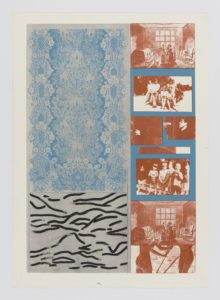
R.B. Kitaj, Old and New Tables, 1964, color screenprint, photoscreenprint, coating (Courtesy of L.A. Louver)
“R.B. Kitaj Collages and Prints” is the gallery’s third solo exhibition of the artist, the first being in 2003 soon after he’d left London to live in Los Angeles in 1997. Pleasant to look at though not quite picturesque, Kitaj seemed to have been working to obey not style so much as the logic of the picture — and whatever was required of it in the passing moment. However brooding, sexed-up or sad, Kitaj’s work favored tone over sentiment. The 1964 screenprint, Old and New Tables, captures this well. Here, divergent images and types of mark-making commingle in a single image that reflect things as various as the artist’s hand, artistic reproduction, home movies, aristocratic interiors and the nude female form. It’s something like the transcript of a dream and shows how, at least with his collages, Kitaj evaded hesitation by pulling shining things seemingly from thin air.
In another print, The Gay Science — from Kitaj’s series Mahler Becomes Politics, Beisbol — a skylight window opens up onto a cloudy, blue sky. “Up onto” is strangely accurate in describing the bewildering spatial perspective in this image, which is basically a wall of colorful blue-green warehouse windows broadsided with poems framing the top of the sky. You could enjoy this for hours and not really need to know where the poems came from or all of what they say, because the surface excitement is enough to satisfy the eye, and imagination.
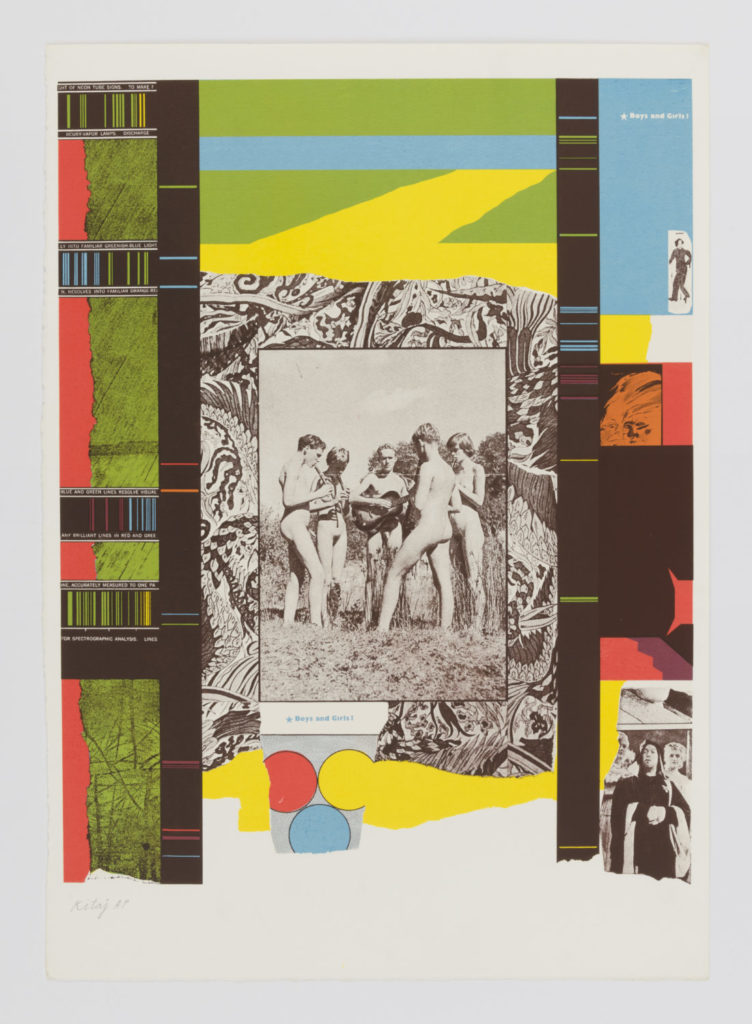
R.B. Kitaj, Boys and Girls!, 1964, color screenprint, photoscreenprint (Courtesy of L.A. Louver)
The prints offer the kinds of textures that the collages don’t really have, adding a new level of elegance. In the flattening out of the referenced, the drawn and the final picture, a kind of holism is achieved that’s in keeping with the collaborative spirit of the series. In fact, during this era and with many of the works in this exhibition, Kitaj worked with master printer Chris Prater to execute the prints. The medium also allowed Kitaj to be measured and planned while flirting with creative abandon.
In work like this, spontaneity is meant to turn conventional meaning on its head, revealing other kinds of realities. They’re there waiting to be enjoyed, and I think in the case of Kitaj, all we need to do is jettison the academic categories, hierarchies and expectations that get in the way of just taking a look and enjoying the show. Beginning as a painter, the practices of collage and printmaking served as an important jump-off in terms of Kitaj’s ongoing creative practice. These methods allowed him to embrace spontaneity and treat his medium as a means to collaborate with himself, freely bouncing from thing to thing — idea to idea, image to image — repurposing his own imagery as well as the imagery found elsewhere. He often appropriated fragments of earlier paintings into his prints, and this kind of reimagining is seen throughout the L.A. Louver show.
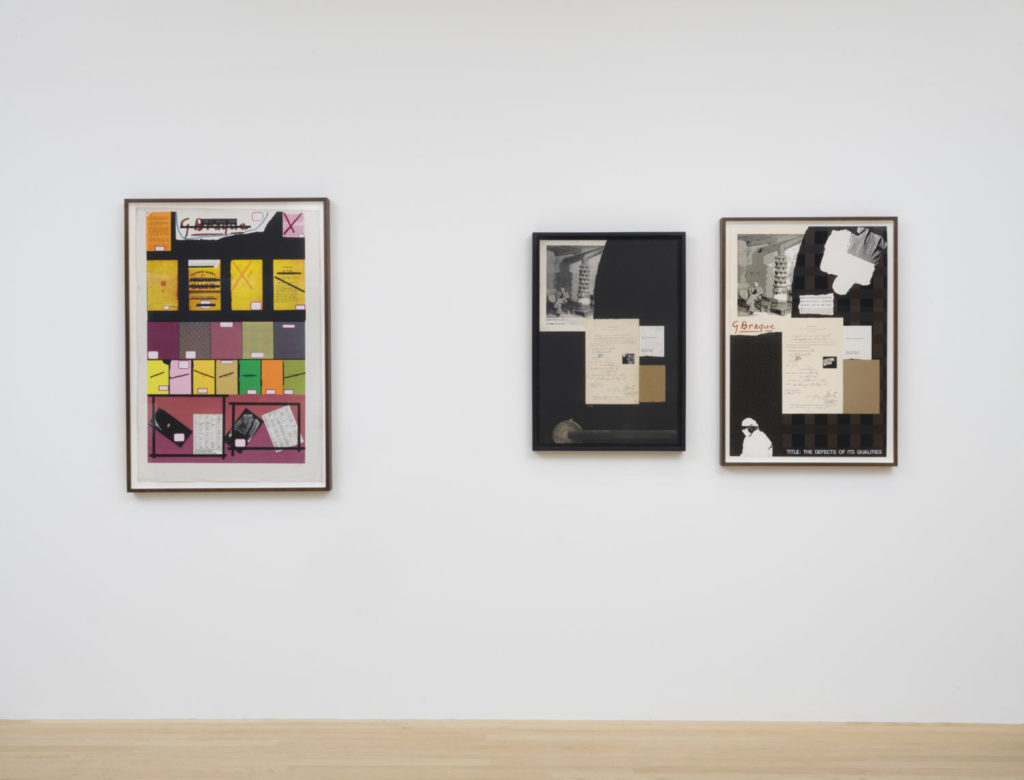
Installation view of R.B. Kitaj Collages and Prints, 1964-1975 (2019). (Courtesy of L.A. Louver)
There seems to be an ongoing critical occupation with Kitaj’s literary, referential aspects. Many find his apparent erudition frustrating, distracting or presenting limitations to possible connection. But the keys to Kitaj’s art are, to my mind, exemplified in the works in this show: spontaneity, fragmentation, strange and surprising juxtaposition, and the freedom that comes from the abandonment of ordinary sense. These qualities connect Kitaj to the poets whom he loved and collaborated with, and he had good taste in poetry: Robert Creeley, John Wieners, Kenneth Koch, Charles Olson, Robert Duncan, etc. Like the poets, Kitaj draws upon all manner of sources and, through the practice of purposeful but chance-driven juxtapositions, renders new meanings by way of oblique positions. His are not at all prescriptive, however referential the works may appear, but rather, they’re multiplicitous, and even democratic.

R.B. Kitaj, Glue-Words, 1967, color screenprint, photoscreenprint, coating on Centurion beige paper (Courtesy of L.A. Louver)
There’s an expectation that, to be able to “read” this complex work you also ought to have read what Kitaj has read, to get his references. But this kind of approach might miss out on a lot of the inexhaustible beauty that Kitaj created. Instead, it is possible to look at Kitaj’s work mainly for its surfaces, these lush and various constructions made under creative circumstances that clearly pleased him greatly. His language or vernacular is open, at play. The work isn’t only meant to be understood in the way that literature is; and the literary doesn’t fully achieve the magic of the work. Spontaneity does.
The exhibition is on view at L.A. Louver in Venice through January 25.
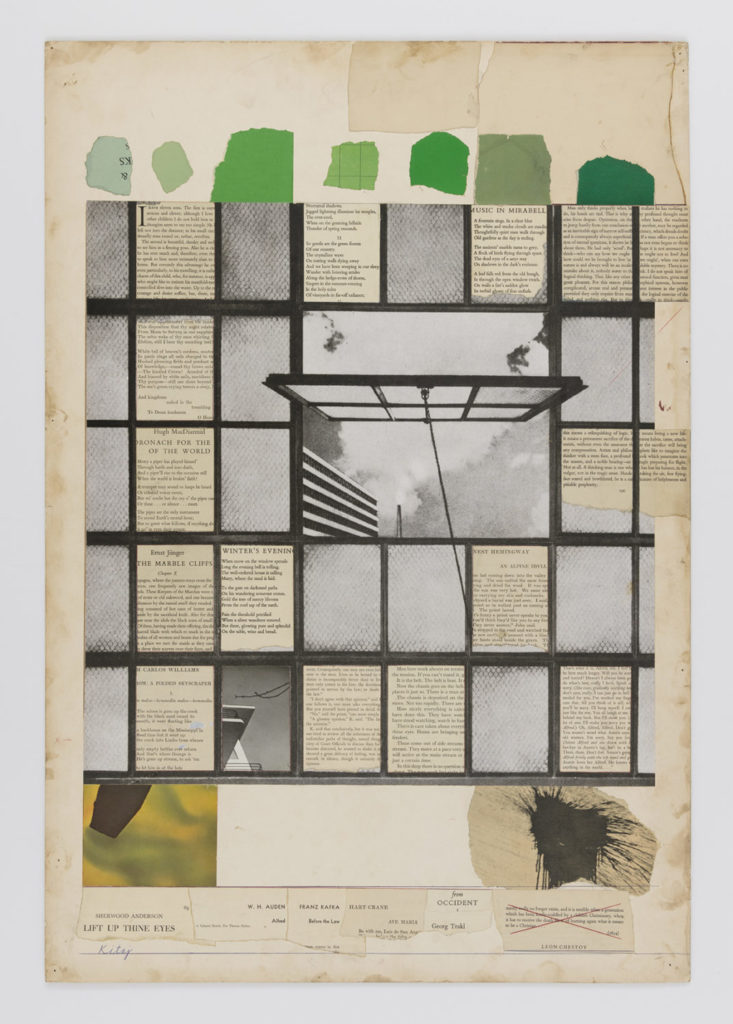
R.B. Kitaj, The Gay Science, 1965, collage on paperboard (Courtesy of L.A. Louver)
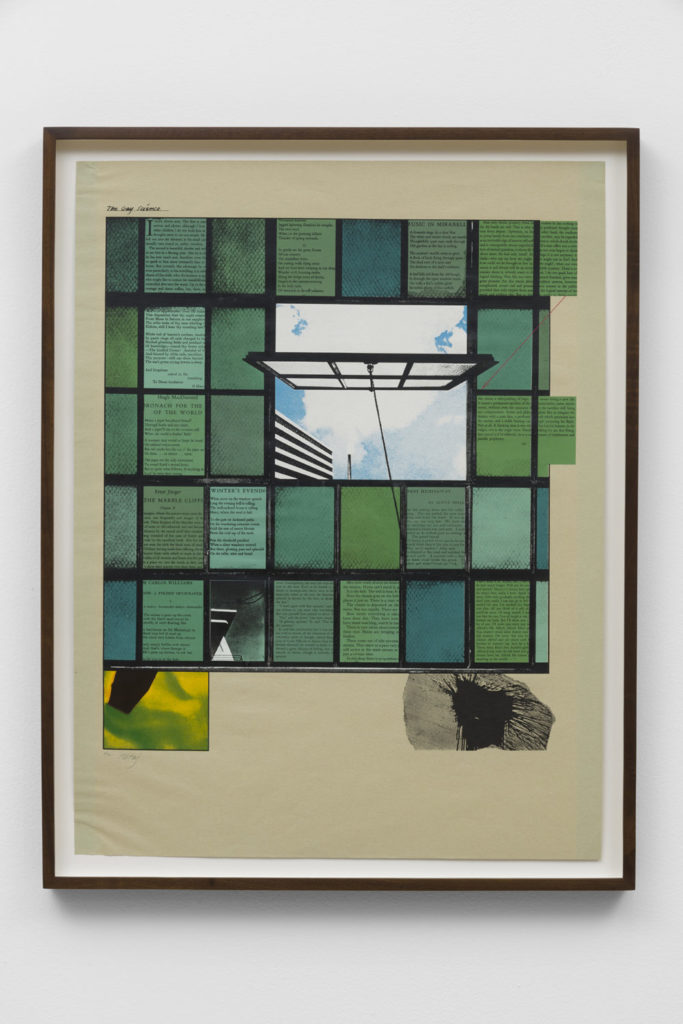
R.B. Kitaj, The Gay Science, 1965, color screenprint, photoscreenprint on light green St. George’s cover paper (Courtesy of L.A. Louver)
Advertising disclosure: We may receive compensation for some of the links in our stories. Thank you for supporting LA Weekly and our advertisers.

